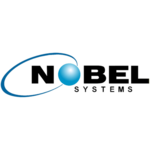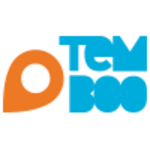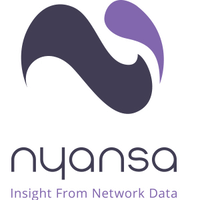Description

Geoviewer Mobile, IoT, and Billing

Temboo
Comprehensive Overview: Geoviewer Mobile, IoT, and Billing vs Temboo
Overview of Geoviewer Mobile, IoT and Billing, and Temboo
Geoviewer Mobile
a) Primary Functions and Target Markets:
- Primary Functions: Geoviewer Mobile is designed to provide Geographic Information System (GIS) capabilities on mobile platforms. It allows users to capture, view, and analyze spatial data in the field. The tool supports offline data collection and field inspections, making it valuable for workers in remote locations who need access to GIS data.
- Target Markets: The primary market for Geoviewer Mobile includes municipal governments, utilities, environmental consulting firms, and any organization that requires field data collection and analysis. It's particularly useful for urban planning, utility management, and environmental monitoring.
b) Market Share and User Base:
- As a specialized GIS tool, Geoviewer Mobile occupies a niche position in the market. It doesn't compete directly with large-scale GIS platforms like Esri but serves a distinct need for mobile GIS applications. Its user base consists mainly of field professionals in industries such as utilities and environmental services.
c) Key Differentiating Factors:
- Focus on mobile capabilities and field data collection.
- Integration with existing GIS systems to provide seamless data transfer.
- Offline functionality, essential for remote areas.
IoT and Billing Solutions
a) Primary Functions and Target Markets:
- Primary Functions: The IoT and Billing solutions are aimed at integrating IoT devices for monitoring and billing purposes. It involves real-time data collection from various sensors and devices and utilizes this data for accurate billing and consumption monitoring.
- Target Markets: These solutions target utility companies (water, electric, gas), smart cities, and industries that require precise monitoring and automation for billing and resource management.
b) Market Share and User Base:
- The IoT and Billing market is broad, with numerous competitors offering various solutions. The market share for specific products varies significantly based on region and specific use-cases. These solutions are becoming increasingly widespread as IoT adoption grows, but individual provider market shares can fluctuate.
c) Key Differentiating Factors:
- Integration capabilities with existing IoT ecosystems and billing systems.
- Real-time data analytics and reporting.
- Adaptability to various industry-specific needs.
Temboo
a) Primary Functions and Target Markets:
- Primary Functions: Temboo is a software platform that provides tools for connecting hardware to the internet and enabling IoT applications. It offers coding tools and libraries that simplify the process of programming IoT devices and managing data workflows.
- Target Markets: Developers, IoT enthusiasts, and businesses building IoT applications. Temboo is particularly attractive to smaller companies and developers who need efficient ways to integrate hardware and software for IoT projects.
b) Market Share and User Base:
- Temboo occupies a significant niche within the developer and IoT space, especially among smaller companies and independent developers. While it does not have the extensive reach of major cloud service providers that offer IoT solutions, it is popular in the developer community due to its simplicity and versatility.
c) Key Differentiating Factors:
- User-friendly platform that simplifies IoT development.
- Provides robust libraries for a wide range of hardware.
- Focus on enabling rapid prototyping and development for IoT solutions.
Comparison and Differentiation
- Geoviewer Mobile is primarily distinguished by its mobile GIS capabilities and offline functionality.
- IoT and Billing solutions stand out for their real-time data processing and billing integration, catering largely to utilities and smart city initiatives.
- Temboo differentiates itself by targeting developers and small businesses with its easy-to-use platform that simplifies IoT device programming and data workflow management.
Each of these products serves distinct needs within their target markets, with varied adoption rates based on specific industry requirements and levels of technical sophistication demanded by the user base.
Contact Info

Year founded :
Not Available
Not Available
Not Available
Not Available
Not Available

Year founded :
2013
+1 212-274-8555
Not Available
United States
http://www.linkedin.com/company/temboo-inc-
Feature Similarity Breakdown: Geoviewer Mobile, IoT, and Billing, Temboo
Analyzing the feature similarity breakdown for Geoviewer Mobile, IoT, and Billing compared with Temboo, we can delve into the core features, user interfaces, and unique aspects of each product:
a) Core Features in Common
Geoviewer Mobile, IoT, and Billing:
- Data Management: All three systems include robust data collection and management capabilities, suitable for different kinds of datasets pertaining to mobile, IoT devices, and financial transactions.
- Analytics and Reporting: Each product offers analytics tools to interpret the respective data sets, glean insights, and generate reports.
- Cloud Integration: They likely possess some form of cloud connectivity to facilitate data syncing and remote access.
Temboo:
- Connectivity: Temboo's core feature is connecting applications to multiple online services and devices, including IoT platforms.
- Automation: It provides automation services, enabling actions based on various triggers and inputs.
- SDK and API Support: Temboo enables the integration of APIs and SDKs for flexible development.
Common Core Features:
- IoT Data Handling: Both systems can handle IoT-related tasks, indicating shared features related to IoT integration and data manipulation.
- Cloud-Based Solutions: Both rely heavily on cloud services for operational efficiency and remote capabilities.
- Automation and Integration: They share the ability to integrate with various services and automate tasks based on defined parameters.
b) User Interface Comparisons
-
Geoviewer Mobile, IoT, and Billing: Likely feature specialized interfaces tailored to their specific sectors—GIS, IoT device management, and billing. The interfaces are probably more focused on industry-specific needs, like geospatial data visualization for Geoviewer or transaction tracking for Billing.
-
Temboo: Offers a developer-centric interface, emphasizing code generation and ease of integration for various APIs and services. The interface is highly technical and geared towards users who need flexibility for programming and creating custom workflows.
Comparison: Geoviewer and Billing interfaces tend to be more user-facing, oriented towards business operations, whereas Temboo is largely targeted at developers needing integration capabilities.
c) Unique Features
-
Geoviewer Mobile: Offers specialized tools for geospatial data visualization and editing, crucial for GIS professionals. Unique features might include map layer visualization, real-time GPS tracking, and spatial analysis tools.
-
IoT: Features focused on device management, firmware updates, and real-time data monitoring. Unique features might include remote diagnostics, sensor data analytics, and device provisioning.
-
Billing: Provides billing-specific features such as invoicing, payment processing, and financial reporting. Unique features might include subscription management, billing automation, and compliance reporting.
-
Temboo: Unique in its broad integration capabilities, allowing connections across varied APIs and web services. Temboo's unique proposition is its ability to generate code snippets for various programming environments, accelerating the development process for IoT applications and workflows.
In summary, while there are shared features around data management and cloud capabilities, each product delineates itself through specialized functionalities fitting their respective domains. The user interfaces reflect the target audience, with Temboo focusing on developers and the other products aimed at end-users in their industries.
Features

Geoviewer Mobile
Billing System
IoT Integration

Enhanced Workflow Automation
User-Friendly Interface
Comprehensive Support
Security and Reliability
Best Fit Use Cases: Geoviewer Mobile, IoT, and Billing, Temboo
Geoviewer Mobile, IoT, and Billing
a) Best Fit Use Cases
Geoviewer Mobile, IoT, and Billing is particularly well-suited for businesses or projects that are involved in infrastructure management, utilities, and environmental services. Here's how:
-
Infrastructure Management: Municipalities or companies involved in managing infrastructure such as roads, bridges, and public facilities. Geoviewer Mobile allows for real-time data collection and analysis, which is crucial for maintenance and repair planning.
-
Utilities: Energy, water, and waste management companies can leverage Geoviewer and its IoT capabilities to monitor and manage their networks, understand asset performance, and forecast needs. The billing component can help in handling customer accounts and usage charging efficiently.
-
Environmental Services: Companies that monitor environmental conditions for agriculture, forestry, or conservation. The ability to track changes in real-time can be necessary for dynamic decision-making and data-driven operations.
-
Field Services: Any business that relies on field teams to perform tasks outside the office can benefit. Geoviewer Mobile allows field personnel to collect data and update operation centers in real-time.
b) Industry Verticals and Company Sizes
- Industry Verticals: Civil engineering, urban planning, smart cities, agriculture, and environmental conservation.
- Company Sizes: Best suited for medium to large companies with complex operations that require detailed geospatial data integration and billing systems.
Temboo
b) Preferred Scenarios
Temboo is ideal for businesses and projects focusing on innovative IoT applications and quick prototyping. It provides a streamlined interface for connecting various IoT devices with cloud services and has a focus on automation and workflow management. Use cases include:
-
Rapid Prototyping and Development: For startups or R&D departments within larger organizations that need to quickly develop prototypes for IoT devices.
-
IoT Automation: Companies that require automation in manufacturing or home automation systems can use Temboo to streamline the integration of different IoT devices and services.
-
Cross-Platform Workflows: Situations that demand integrating multiple APIs and devices into a cohesive workflow. Temboo's cloud-based solutions are advantageous for coordinating different platforms.
d) Industry Verticals and Company Sizes
- Industry Verticals: Innovation-focused sectors such as tech startups, manufacturing automation, smart home technologies, and research institutions.
- Company Sizes: Suitable for small to medium enterprises, especially those in the early stages of IoT deployment or those that need cost-effective automation solutions.
Conclusion:
- Geoviewer Mobile, IoT, and Billing is ideal for established companies needing robust infrastructure management and billing solutions, particularly in utility and environmental sectors.
- Temboo is better suited for smaller firms and startups focusing on IoT innovation and automation, allowing them to quickly prototype and deploy IoT solutions across various industries.
Pricing

Pricing Not Available

Pricing Not Available
Metrics History
Metrics History
Comparing teamSize across companies
Conclusion & Final Verdict: Geoviewer Mobile, IoT, and Billing vs Temboo
To determine which product—Geoviewer Mobile, IoT and Billing, or Temboo—offers the best overall value, it's important to evaluate the capabilities, strengths, weaknesses, and suitability for specific use cases of each option.
a) Best Overall Value
Temboo appears to offer the best overall value, especially for developers and businesses focusing on integrating IoT capabilities and automation workflows within their existing systems. Temboo's strengths lie in its versatility and ease of use for a broad spectrum of IoT applications.
b) Pros and Cons
Geoviewer Mobile, IoT, and Billing
Pros:
- Integrated solutions for geospatial analysis and billing, which are particularly useful for organizations that require robust mapping and billing capabilities.
- Optimized for field operations with mobile access.
- Strong in industries like utilities where geographic information systems (GIS) are essential.
Cons:
- May not be as flexible in terms of integrating with other IoT services and platforms.
- Can be over-specialized for users who do not need extensive geospatial or billing functionalities.
Temboo
Pros:
- Highly versatile, supporting various industries with IoT apps and services.
- Excellent for prototyping and building custom solutions due to its lower barrier to entry.
- Offers robust support for automation and integrations with a vast array of APIs.
Cons:
- May require more initial setup and configuration for some specific use cases.
- Less specialized in areas like billing or geospatial analytics when compared to a dedicated product like GeoViewer.
c) Recommendations
For users deciding between Geoviewer Mobile, IoT, and Billing vs. Temboo, consider the following recommendations:
-
Use Geoviewer if your primary needs align with geospatial data management, mobile field operation optimization, and billing integration. It is particularly suited for utility companies, telecommunications, and public services that rely heavily on GIS data.
-
Choose Temboo if you require flexibility in developing IoT applications and are interested in automation that integrates seamlessly with diverse systems. It is a better fit for those looking to innovate quickly, especially in tech-driven environments where agility and integration are critical.
Ultimately, the choice between Geoviewer and Temboo should be guided by the specific needs of the organization, considering factors like the complexity of use cases, the necessity for integrations, and scalability requirements.
Add to compare
Add similar companies



